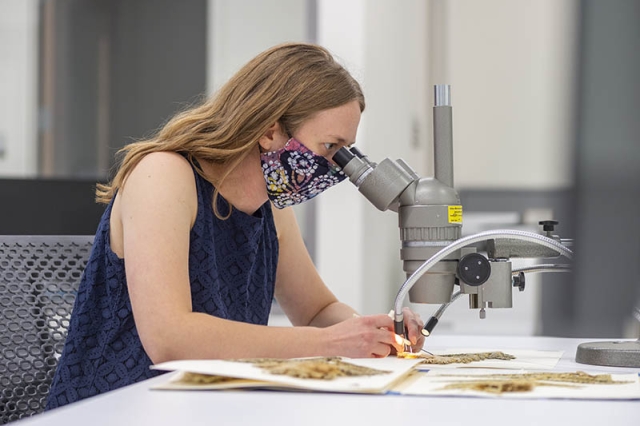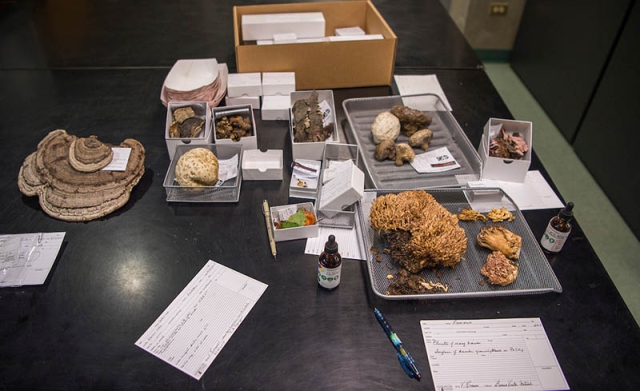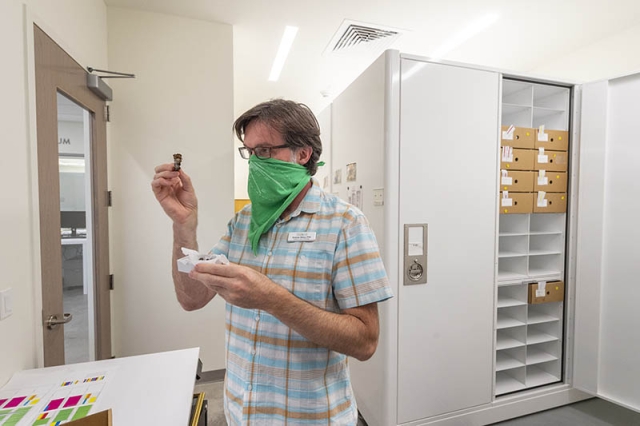Winter in the Natural History Collections
Activities in Denver Botanic Gardens’ Research and Conservation Department are highly influenced by the seasons. Scientists at the Gardens take advantage of the entire growing season by collecting ecological and plant demographic data as well as plant and fungal specimens for study. While the summer is our busiest season, that doesn’t mean we go dormant in the winter like many of the organisms we study. The natural slowdown in the specimen collections during winter is a critical time for the orderly completion of one year – and the planning required to begin the next.

Herbarium staff examining dried plant specimens under microscope.
This natural rhythm of the seasons provides an organic opportunity to process and analyze all the amazing collections made during the year. Our team utilizes this time to accomplish many tasks that are simply not possible during the rush of the growing season. This includes important processes such as transcribing field notebooks and data collection sheets, conducting analysis, and processing specimens to be safely stored in the Natural History Collections.

Fungal specimens and corresponding field notes in various stages of processing.
Additionally, we can make final identification determinations on that year’s specimens, add our incoming specimen data to our online databases, make labels for the specimens, mount the pressed plants to herbarium paper, and place the dried fungi into archival boxes. The specimens get imaged with a high-resolution camera and those photos plus any field photos or iNaturalist records of the organism are connected to their database record. Capitalizing on the lull of field work during the winter allows us to capture and analyze the important data that these collected specimens provide.

Herbarium staff filing away incoming fungal specimens into the Sam Mitchell Herbarium of Fungi.
Like many of the organisms we study, we also use the winter as a time to recover from one season and prepare for the next. There’s time to write grants which will potentially secure funding for new projects. These types of projects require us to coordinate everyone’s schedule and our resources such as field vehicles and specialized equipment for our active field researchers plus their seasonal staff. We map out the routes we plan to take to get to our fieldwork sites and make overnight accommodations when necessary. Doing as much planning as possible during the winter season makes the field season go more smoothly - allowing us to continually improve our ability to accomplish our field season goals.
Add new comment